January 2023 Update
Ashley Nichols - Jan 10, 2023
The new year begins with a review of 2022 - a reminder of why we can hold so much cash at a time, how interest rates and inflation have affected us, how the S&P and even the 10-year Treasury took a dive in the double-digits on a total return basis.

Money is a tool. It's something that supports your life!
Don't forget about our Photo Contest! We are accepting submissions until January 21st, 2023 - and a gift card of your choosing is up for grabs! Check out our December Blog's Millennial Minute for more details! Click here!
Our Portfolio
**Hopefully everyone has a chance to listen to our podcasts. We will have a new one this month**
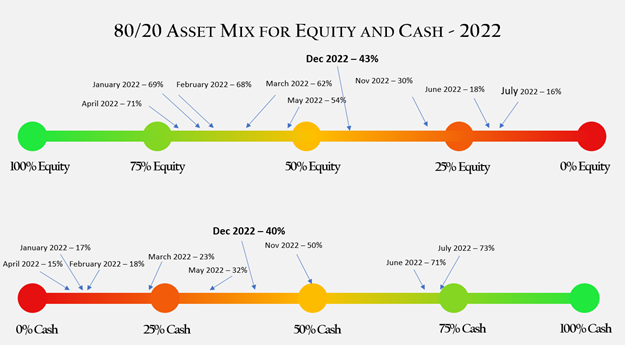
In 2018, we became concerned about the bubble that was developing in large cap US stocks due to ultra low interest rates. As a result, we became more defensive in how we managed the accounts. Over the last 5 years, we have had a beta of 0.38 vs the market at 1.00 (beta measures volatility) which means we have had 1/3 the volatility that the markets have had. From 2018 to the end of 2022, our portfolio had a maximum draw down or 16.14% vs the bench mark of 56.5%, the TSX of 50% and the S&P500 of 57%.
In other words, our portfolio fell 1/3 the amount that the markets did. Much easier to sleep at night!
December was very quiet in the portfolio, with the only two trades: the selling of the Brookfield Asset Management spinoff and trimming our overweight position of the Vaneck Oil Service EFT.
This cash was put into the high interest saving accounts.
90% of our holdings not only pay dividends but have been growing their dividends.
Our cash is currently yielding 4.25%, our bonds 2.60% and our stocks 2.58%
Returns on our 60/40, 70/30 and 80/20 Portfolios - before fees:
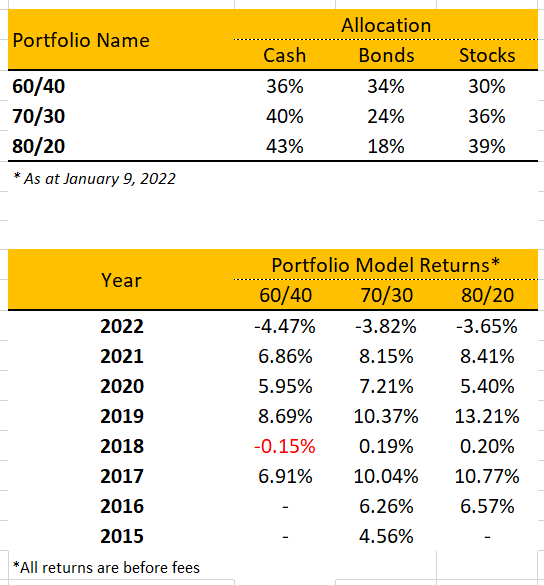

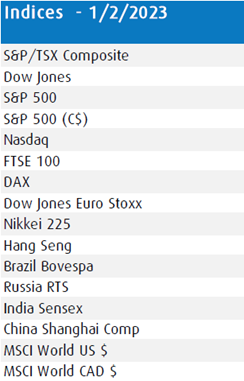

Why we hold cash
Holding cash during a bear markets serves two main goals. Firstly, it helps to preserve capital as cash does not go down in value and allows you to avoid much of the downside in bear markets and secondly, it can be used to buy assets at generational lows.
The following chart shows how stocks do well coming out of bear markets:
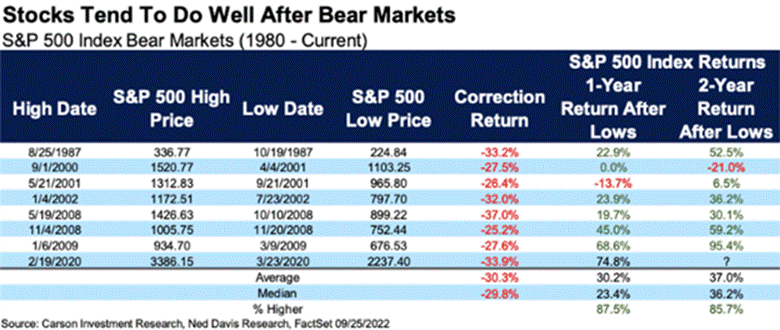
The average 2 year return coming out of a bear market has been 36%. If you have avoided most of downside in the markets and have cash in your portfolio available to buys stocks at the bottom this leads to excellent returns. So far, we have avoided most of the downside in our portfolio and have over 40% cash in all of our mandates. When the buying opportunities comes we will be ready.
Year In Review
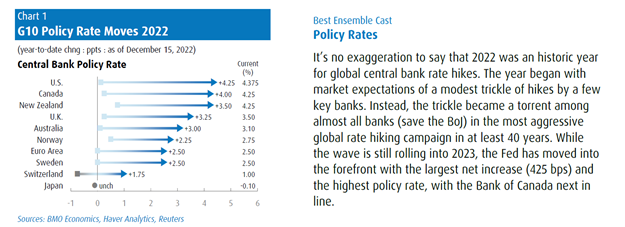
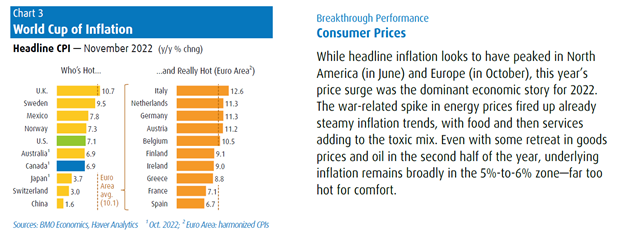
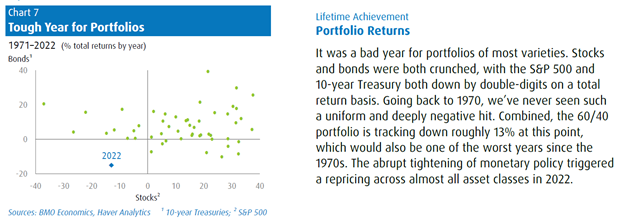
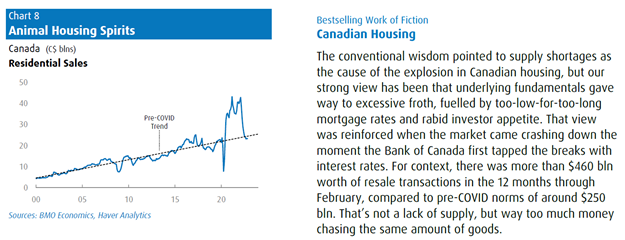
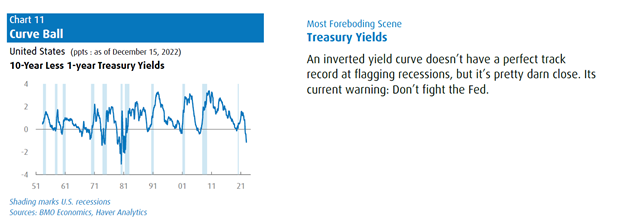
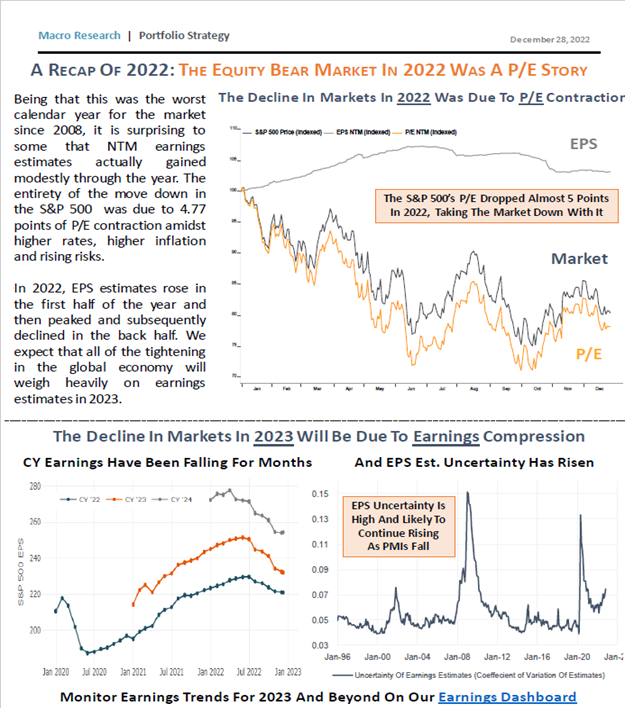
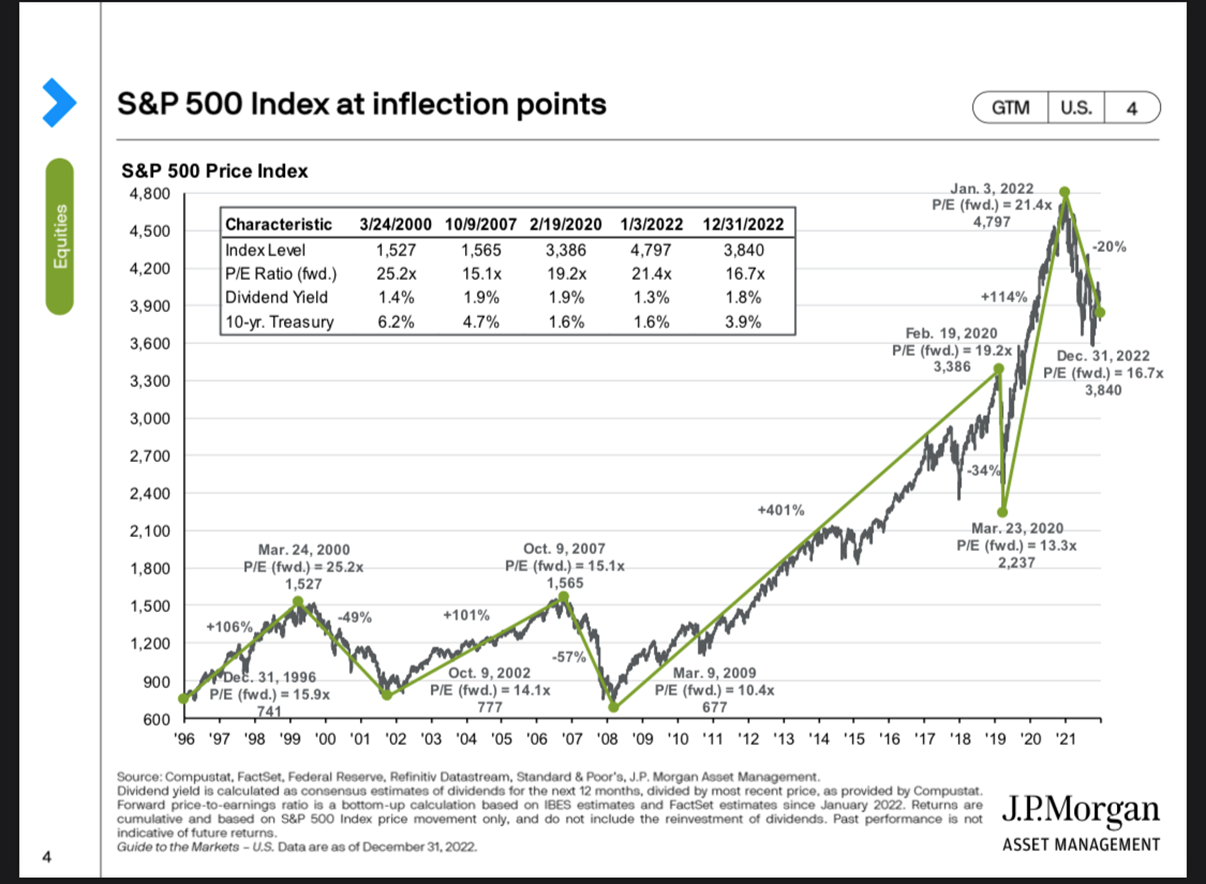
The valuations on the S&P 500 have decreased from their highs but still are not cheap.
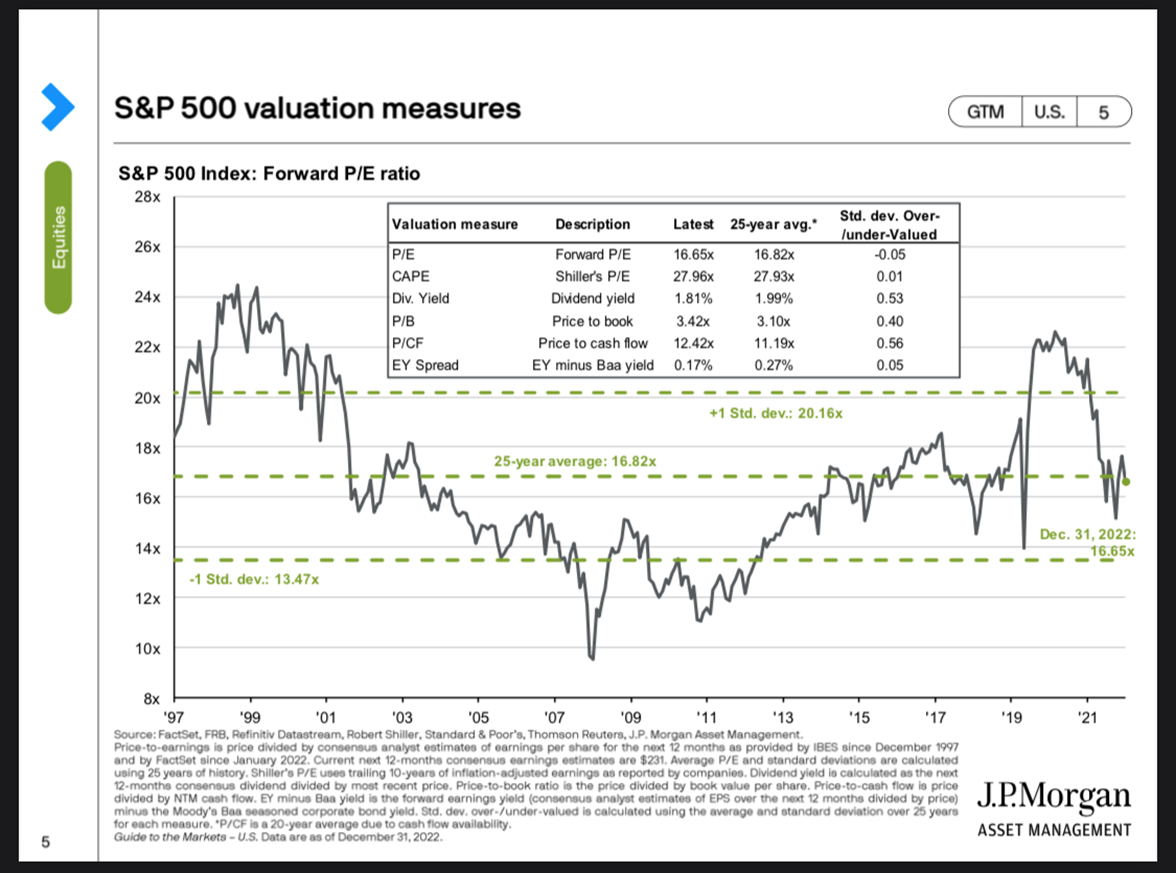
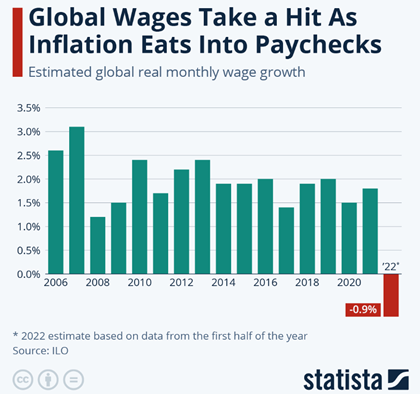
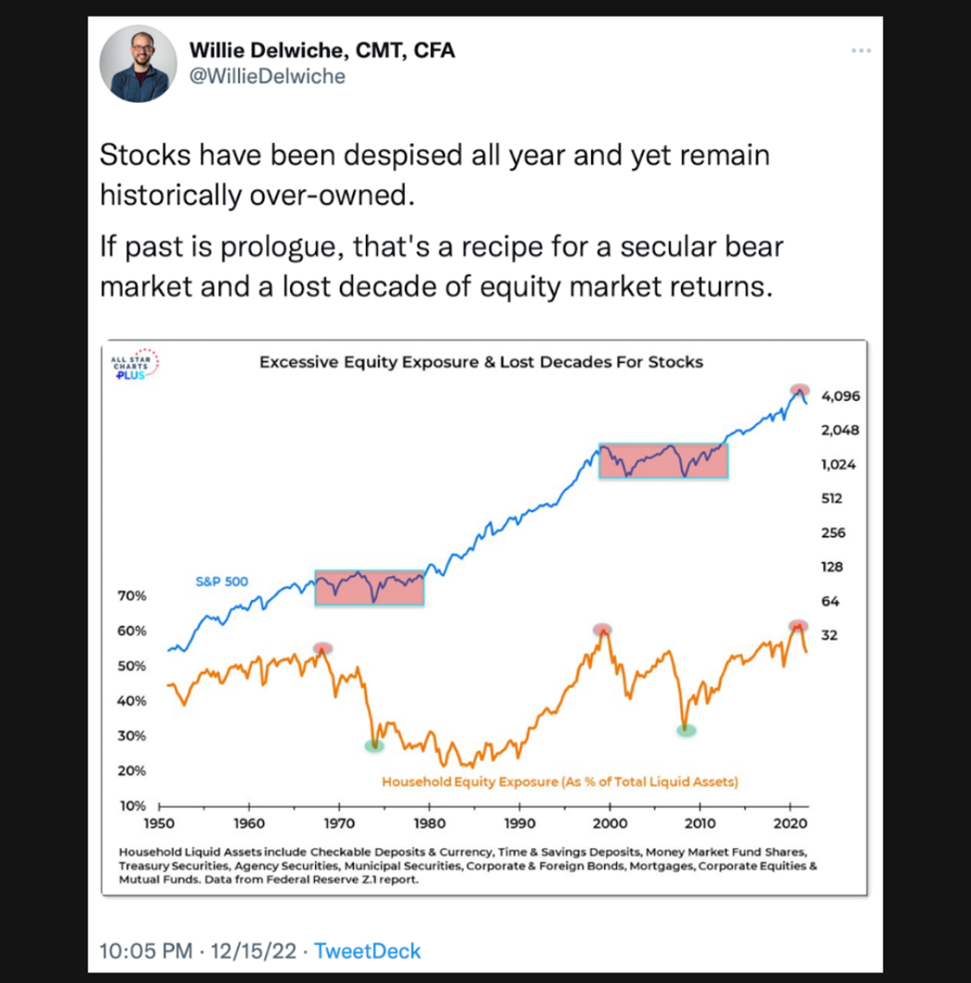
Technical Comments
https://www.brookstradingcourse.com/price-action-trading-blog/
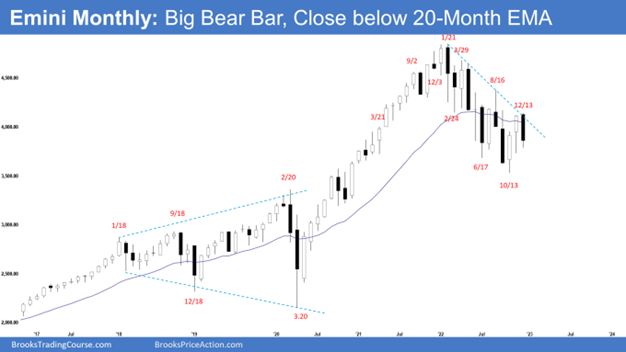
- The December monthly S&P 500 candlestick was a big bear bar closing in the lower half with a prominent tail below, a stall at resistance.
- The bulls see the current selloff from January 2022 as a wedge bull flag (February 24, June 17 and October 13).
- They got a follow-through bull bar in November closing above the 20-month exponential moving average.
- However, the bulls were not able to create another follow-through bull bar and stalled around the major bear trend line.
- December traded slightly above November but reversed to close as a big bear bar below the 20-month exponential moving average.
- They hope to get at least a small second leg sideways to up following the current pullback.
- The 20-month exponential moving average and bear trend line are resistances above.
- The move down since January 2022 has a lot of overlapping bars. The bears are not yet as strong as they hope to be.
- They see the move down as a broad bear channel. They hope that the recent move up is simply forming a lower high and wants a retest of the October low.
- They then want a breakout followed by a measured move down to 3450 or the 3400 Big Round Number which is also year 2020 high.
- The bears will need to create a follow-through bear bar in January to increase the odds of lower prices.
- Because December was a bear bar closing in the lower half, it is a weak buy signal bar for January. It slightly increases the odds that the S&P 500 may trade at least a little lower.
- The candlesticks in the last 7 months are overlapping between the range of 4300 and 3500 which means the S&P 500 is in a trading range.
- Traders will BLSH (Buy Low, Sell High) until there is a breakout from either direction.
- Traders will see if the bulls can create a second leg sideways to up, or if the bears can create a follow-through bear bar in January.
- Until the bulls can break far above the bear trend line, the broad bear channel remains in play.
Millennial Minute
It's time for another piece about how we need to stretch our dollars further! It's no secret that money is tight all over the world - we see it in the news every day. This month I take a positive approach to how 2023 can be a year to become a little wealthier - just in slightly different ways than we are used to.
As always, please feel free to pass along this article to the younger friends, family, even co-workers and acquaintances in your life! Knowledge is power, and the more we can share, the better we can all be with managing our wealth.
Click here to read all about it!
Planning
As you consider your financial priorities for the coming year, here are some financial resolutions that could help you to save taxes, protect your portfolio and position yourself for financial success in 2023.
